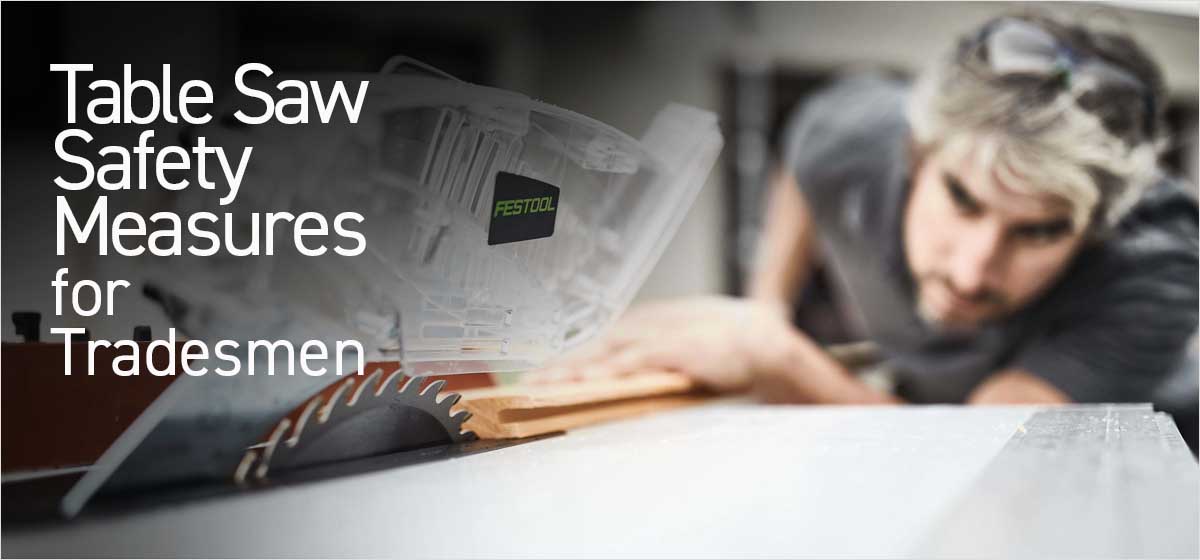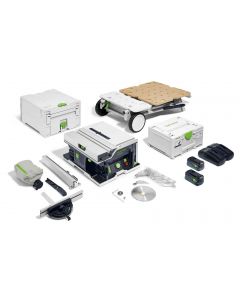
Unleash the power
Table saws are powerful tools, and they need to be respected. Whether you’re just starting out or a table saw aficionado, brushing up on or learning safety procedures is critical. As with any power tool, table saws require a variety of safety measures to minimise workshop hazards and prevent injuries. Let’s discuss the table saw safety measures for tradespeople and DIY lovers so that you can prioritise workplace safety.
SAFETY MEASURES BEFORE YOU SWITCH YOUR TABLE SAW ON
Safety measures must be taken throughout the process. Safety begins with wearing personal protective gear and maintaining a clean and clutter-free workshop to ensure you don’t trip or inhale dust and your table saw doesn’t become clogged by dust build-up. To this end, keep the workplace clean, dry, and free from sawdust and other slip hazards. We always recommend using a dust extractor or a dust bag to minimise hazards and mess.
Another safety measure is to ensure the table saw’s components are functioning correctly. Inspect the blade guard, motor, and other moving components for damage or dust build-up. Lastly, ensure your blade is sharp, clean, and undamaged to avoid kickback.
SET UP YOUR WORKPIECE
Start by inspecting your workpiece for nails, screws, or any foreign objects that could cause kickback or blade damage. Next, measure your workpiece and mark your cutlines to avoid hazardous mistakes.
If your workpiece isn’t set up correctly with a rip fence, angle stop, and additional necessary tools, you could jeopardise your safety. The aim is to ensure your workpiece doesn’t shift while cutting.
SAFETY MEASURE WHILE CUTTING
There are several safety measures to keep in mind while cutting. Always stand to one side of the blade, not directly behind it, to avoid injury from kickback. Never reach over the blade, keeping your fingers clear at all times. Switch the table saw on and wait for the blade to reach full speed before the workpiece touches the blade.
While cutting, hold the workpiece firmly against the table and fence to prevent shifting. If you are cutting a smaller piece of wood, use a push stick to keep your fingers away from the moving blade. Never cut freehand.
With your feet firmly planted on the ground, maintain a steady feed rate without forcing the workpiece through the blade if you meet resistance to avoid kickback or blade binding. Switch the blade off if you need to make adjustments.
ESSENTIAL SAFETY MEASURES AFTER CUTTING
There are safety measures to consider even after you have finished cutting. Wait for the blade to come to a complete halt before removing your cut-offs from the table. Then, unplug the saw before conducting any maintenance or cleaning. Next, you need to clear the workplace of dust and debris and pack tools away. Sawdust is hazardous, posing risks to your respiratory system and acting as a fire hazard.
A WELL MAINTAINED TABLE SAW IS A SAFE TABLE SAW
Beyond cleaning and inspection, other maintenance is necessary to ensure a safe workplace. You may need to sharpen your saw blades, lubricate the accessible moving parts like the arbour, and send it to a licenced professional to perform regular maintenance on the motor and damaged parts. A well-maintained table saw is not only more efficient and precise but also safer to use.
Tradespeople must adhere to strict safety measures in the workplace to reduce the risk of accidents and injuries. Remember, a safe tradie is a productive tradie.
A selection of Festool Table Saws










